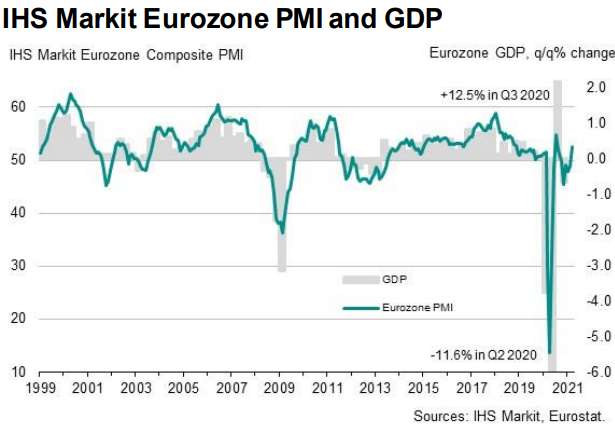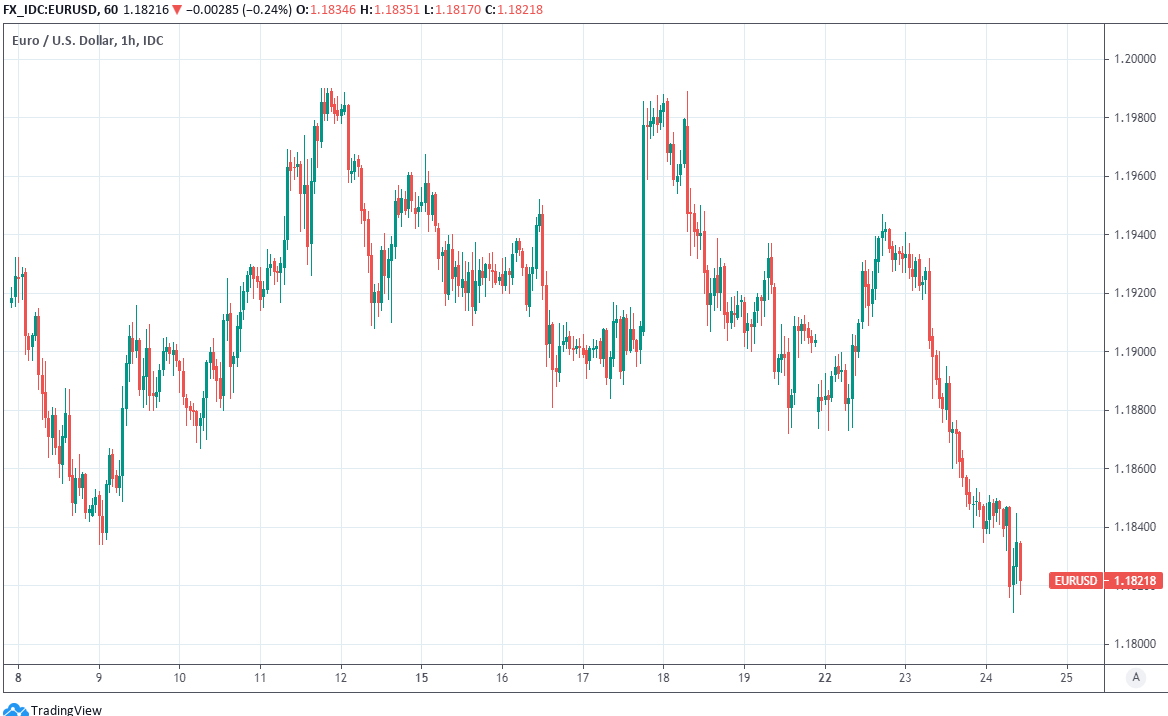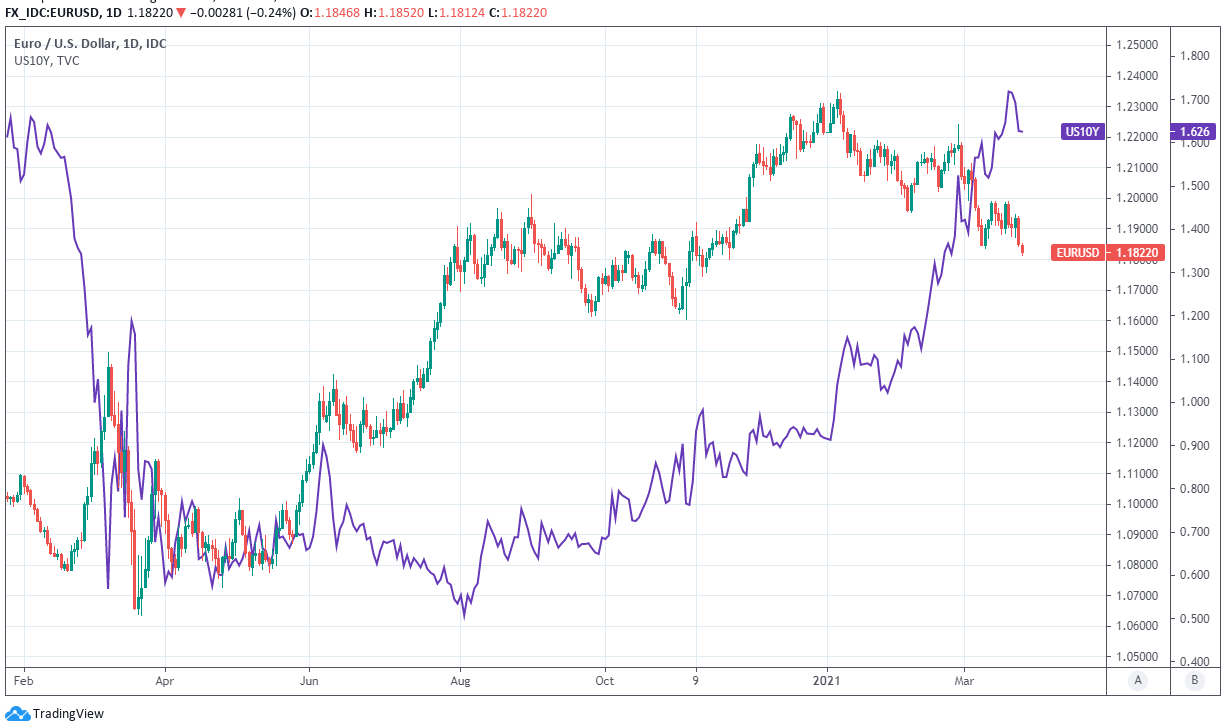Euro-Dollar Looks to Stabilise after March PMI Record
- Written by: James Skinner

© Grecaud Paul, Adobe Stock
- EUR/USD spot rate at time of writing: 1.1832
- Bank transfer rate (indicative guide): 1.1414-1.1497
- FX specialist providers (indicative guide): 1.1605-1.1745
- More information on FX specialist rates here
- Set an exchange rate alert here
The Euro-Dollar rate was attempting to pare back steep earlier declines on Wednesday after IHS Markit PMI surveys revealed a record increase in output from the manufacturing sector for this month, offering tentative hope that an economic stabilisation may not be far off.
Europe's manufacturing sector saw output rise to its highest level on record in March when the bloc-wide PMI advanced to an unprecedented 63.0, from 57.9 the prior month, while consensus had looked for it to ease back to 57.5.
Gains were most noteworthy in Germany, although France and the remainder of the region also saw their fastest expansions since January 2018. Eurozone services sectors also gave reason for cheer with the rate of contraction in activity among the smallest since the onset of the pandemic.
The Eurozone's service PMI rose from 45.7 last month to 48.8 in March, with the upturn again led by Germany.
"This indicates that 1Q GDP could be better than expected. With lockdowns being extended into 2Q though, we do expect the rapid economic rebound to take off later," says Bert Colijn, an economist at ING.
PMI surveys ask respondents to rate the relative level conditions for a range of factors including employment, production, new orders, prices, supplier deliveries, and inventories, with outcomes represented as a number where anything above 50 is consistent with industry expansion while numbers below are hints of contraction. The data often correlate positively with GDP growth.
"We reduced our 2021 GDP calls last week to 4.1% from 4.4% for the Eurozone with similar changes for Eurozone member countries. The German economy may expand by 3.5% instead of 4.0% this year," says Christopher Demik at Berenberg. "Despite the hit to economic activity in Q1 and the delayed re-opening of Eurozone economies, businesses remain optimistic."
Wednesday's numbers would appear at first glance to suggest the Eurozone is finding its feet following an economic contraction in the final quarter but in light of the deteriorating coronavirus situation on the continent, there's uncertainty about whether the nascent upturn can be sustained.
The Euro attempted to pare earlier losses following the release but with the Dollar resurgent almost across the board and American bond yields on the rise again, Europe's single currency may be facing an uphill struggle.
"The experience from the pandemic thus far shows that it is difficult for the EZ economy to grow with consumer-facing services and non-essential retail out of the equation no matter how strong manufacturing is. More generally, as we argued in this morning’s previous notes, new virus restrictions are now being introduced, indicating that we should expect a setback," says Claus Vistesen, chief Eurozone economist at Pantheon Macroeconomics.
Above: Euro-to-Dollar rate shown at hourly intervals.
"USD is breaking higher against most major currencies. Concerns over the global growth outlook is weighing on financial market sentiment after lockdown measures in large parts of Europe were extended," says Elias Haddad, a strategist at Commonwealth Bank of Australia. "Our currency strategy is grounded on the reflation theme. We are not giving up on this theme especially now that long‑term government bond yields in major economies have adjusted lower, but the ride ahead will be a bumpy one."
Some of the largest Eurozone economies either returned to 'lockown' this week or saw restrictions of various kinds prolonged due to rising infections including new and more deadly variants. Germany, Italy, France and others enhanced or extended restrictions while in many cases citing inadequate vaccine supplies alongside rising infections.
The EU had provided a vaccine dose to just 10% of its population by Wednesday, while the U.S. had reached 25% and the UK more than 40%. The U.S.economic outlook has also been buttressed by President Joe Biden's $1.9 trillion fiscal support package and expectations of further spending that hasn't been seen to the same extent in Europe.
All of these factors at least appeared to have lifted American bond yields and drawn investors back to the Dollar during recent weeks, which has put the Euro-Dollar rate under pressure, culminating in the single currency falling below its 200-day average around 1.1850 during the overnight session on Wednesday.
"EUR/USD came under pressure yesterday and the market has eroded the 200-day ma at 1.1858 and sits on the short term pivot at 1.1835/31 (recent low). Failure here will target 1.1750 and the 1.1695/02 support, this is the 38.2% retracement and the September and November lows," says Karen Jones, head of technical analysis for currencies, commodities and bonds at Commerzbank, who sold EUR/USD around 1.2075 earlier this month and is targeting.
Above: Euro-to-Dollar rate shown at daily intervals with 10-year U.S. bond yield..







